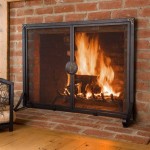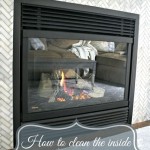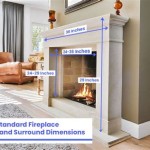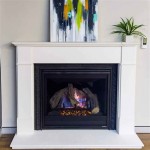Antique Fireplace Insert Coal: A Timeless Heating Option
Antique fireplace insert coal units represent a significant period in heating technology. These inserts, designed to fit directly into existing fireplace openings, offered homeowners a more efficient and controlled method of burning coal for warmth compared to open fireplaces. Understanding their construction, function, and historical context provides valuable insight into the advancements in home heating systems.
The development of coal-burning fireplace inserts correlated with the increasing availability and affordability of coal as a fuel source. Throughout the 19th and early 20th centuries, coal replaced wood as the primary heating fuel in many regions. This shift necessitated the creation of appliances specifically designed to burn coal effectively. Open fireplaces, while aesthetically pleasing, were notoriously inefficient, losing a large proportion of heat up the chimney. Coal inserts addressed this problem by providing a closed combustion chamber and controlled airflow, resulting in greater heat output and fuel efficiency.
Key Features of Antique Coal Fireplace Inserts
Antique coal fireplace inserts are characterized by several key features that distinguish them from open fireplaces and other heating appliances. These features contributed to their efficiency and usability.
Construction Materials: The most common material used in the construction of these inserts was cast iron. Cast iron is known for its ability to withstand high temperatures and its excellent heat retention properties. Elaborate castings and decorative elements were often incorporated into the design, adding to the aesthetic appeal of the insert. Nickel plating was also frequently used to provide a durable and attractive finish. Steel was sometimes incorporated, particularly in components that needed to be more resistant to warping or cracking under intense heat.
Combustion Chamber Design: The design of the combustion chamber was crucial for efficient coal burning. These chambers were typically enclosed to restrict airflow and promote complete combustion. Grates within the chamber allowed ash to fall away from the burning coal, ensuring a continuous supply of air. Some inserts featured specialized grates designed for specific types of coal, such as anthracite or bituminous coal, which have different burning characteristics. A key component was the draft control mechanism, which allowed the user to regulate the amount of air entering the combustion chamber, thus controlling the rate of burning and heat output.
Flue Connection: A dedicated flue connection was essential for channeling combustion gases safely away from the living space. Unlike open fireplaces where smoke and gases could easily escape into the room, inserts were designed to connect directly to the existing chimney flue. This connection minimized the risk of carbon monoxide poisoning and improved overall efficiency. The size and design of the flue connection were important factors in ensuring proper drafting and preventing backdrafting.
Operational Principles and Efficiency
Antique coal fireplace inserts operated on the principle of controlled combustion. The process began with loading coal into the combustion chamber. Once ignited, the coal burned, releasing heat and combustion gases. The controlled airflow, regulated by dampers or vents, allowed the user to adjust the burning rate. This control was crucial for maintaining a consistent temperature and maximizing fuel efficiency.
The efficiency of these inserts stemmed from their closed design and controlled airflow. By restricting the amount of air entering the combustion chamber, the insert promoted more complete combustion, reducing the amount of unburned fuel that escaped as smoke. The enclosed chamber also helped to radiate heat more effectively into the room, minimizing heat loss through the chimney. Compared to open fireplaces, coal inserts offered a significant improvement in heating efficiency.
The type of coal used also played a role in the efficiency of the insert. Anthracite coal, known for its high carbon content and clean burning properties, was a popular choice for home heating. Bituminous coal, while more readily available, produced more smoke and required more frequent cleaning of the flue.
Identifying and Assessing Antique Coal Fireplace Inserts
Identifying and assessing antique coal fireplace inserts requires careful examination of their construction, markings, and condition. Understanding the manufacturer's marks and model numbers can provide valuable information about the insert's age and origin.
Manufacturer's Marks: Many antique coal fireplace inserts bear markings from their manufacturers. These marks may include the company name, logo, model number, and patent dates. Identifying the manufacturer can help to determine the age and quality of the insert. Reference guides and online resources can assist in deciphering these markings.
Condition Assessment: A thorough assessment of the insert's condition is crucial before purchasing or using it. Look for signs of rust, cracks, or warping in the cast iron or steel components. Check the grates and dampers for damage or deterioration. Inspect the flue connection for any signs of leaks or corrosion. A professional inspection is recommended to ensure the insert is safe and functional. Safety is paramount, particularly concerning the potential for carbon monoxide leaks due to cracks or poor seals.
Restoration Considerations: Restoring an antique coal fireplace insert can be a rewarding project. Depending on the condition of the insert, restoration may involve cleaning, repairing, and refinishing the components. Replacement parts may be difficult to find, but specialized antique hardware dealers can often provide assistance. It's essential to ensure that any repairs or modifications are performed by a qualified professional to maintain the safety and integrity of the insert.
Antique coal fireplace inserts offer a glimpse into the past while providing a functional heating option. Their design and construction reflect the technological advancements of their time, and their efficiency made them a popular choice for homeowners. Understanding their history and features is crucial for appreciating their value and ensuring their safe and efficient operation.

Valor 530icn Coal Fire Radiant Gas Fireplace And Insert Installed With Polished Windsor Arch In Mantel Antique Mantels

Belmont Small Gas Insert

Vintage Cast Iron Marks Fireplace Insert Complete W Glass Coals Lighting Effects

Can You Burn Wood In A Coal Fireplace

Victor Gas Coal Burner Victorian Fireplace Home Small Farmhouse Decor

Antique Cast Iron Fireplace Electric Gas Flamerite Fires

Gas Inserts Victorian Fireplace

Gallery Henley Cast Iron Fireplace Insert Flames Co

Gas Inserts For The Old Fireplaces San Francisco Victorian Restoration

Pub 16 Inch Gas Coal Basket With Fireback
Related Posts








